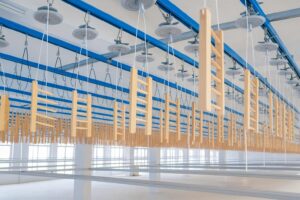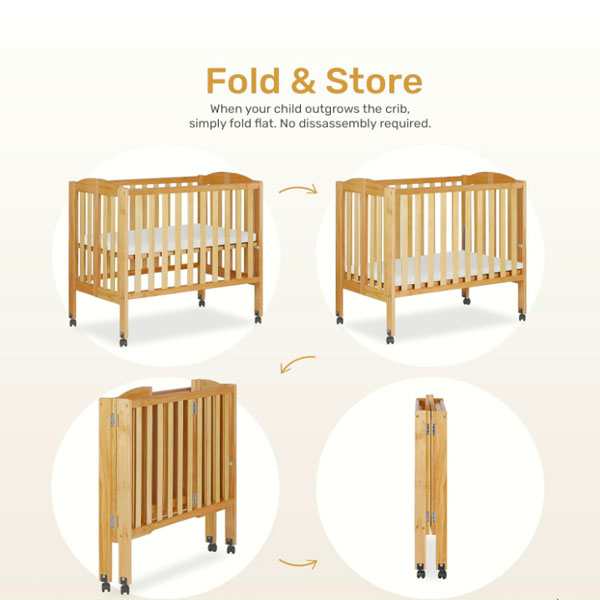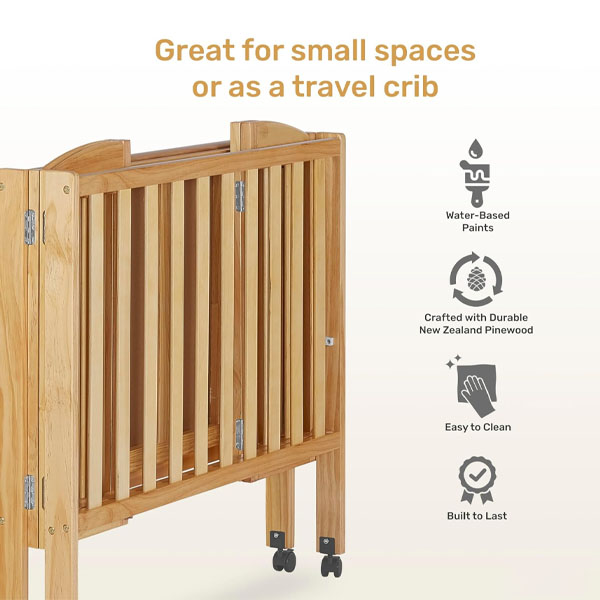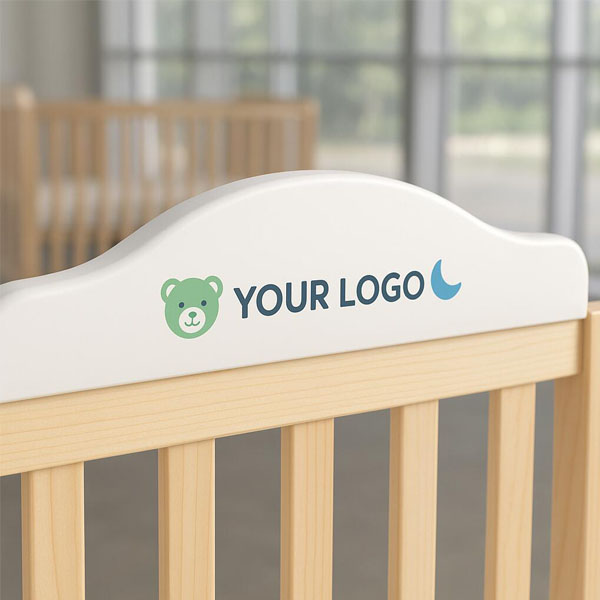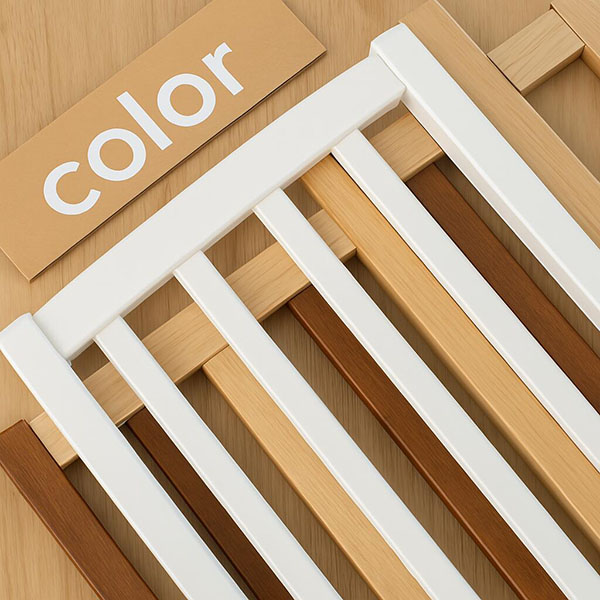The Design Style of the Nursery
Designing a nursery is more than just arranging furniture—it’s about crafting a nurturing environment where functionality meets aesthetics. Whether you’re a first-time parent or updating your existing space, innovative design can transform the nursery into a serene and stimulating haven for your baby. Below is an in-depth exploration of nursery design styles, key elements to consider, and creative ideas to ensure your little one’s space is both safe and inspiring.Designing a nursery is more than just arranging furniture—it’s about crafting a nurturing environment where functionality meets aesthetics. Whether you’re a first-time parent or updating your existing space, innovative design can transform the nursery into a serene and stimulating haven for your baby. Below is an in-depth exploration of nursery design styles, key elements to consider, and creative ideas to ensure your little one’s space is both safe and inspiring.
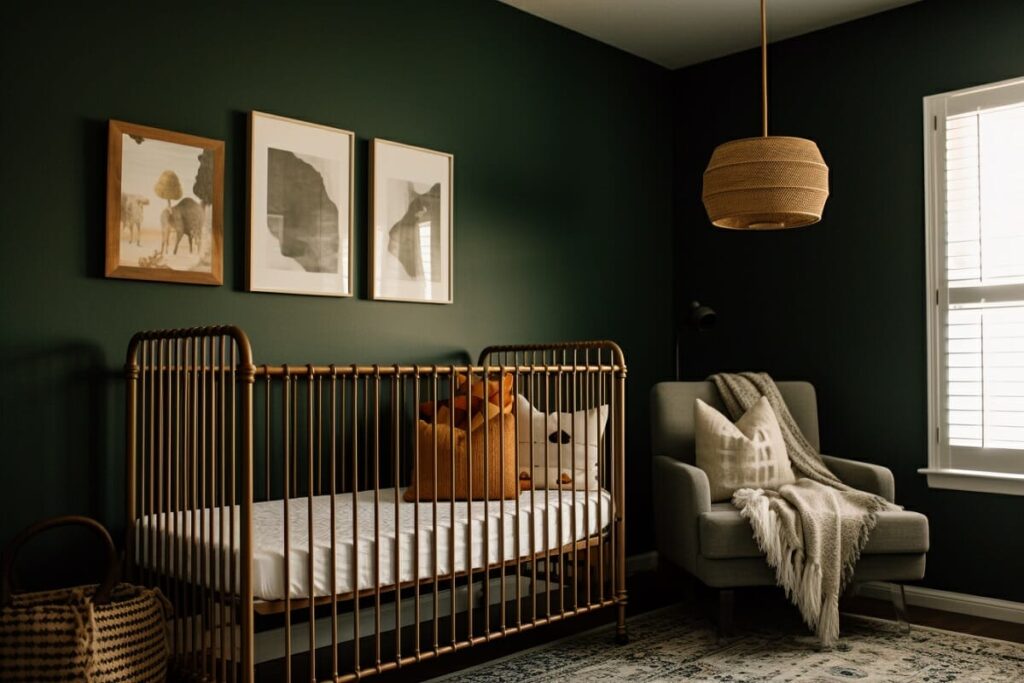
1. Establishing a Design Vision
Before diving into colors and furniture, it’s essential to develop a clear vision for your nursery. Ask yourself:
- What mood do I want to evoke? A tranquil, spa-like space or a vibrant, energetic room?
- How will the design adapt as my child grows? Consider transitional elements that can evolve from infancy through toddlerhood.
- What are the practical requirements? Safety features, storage needs, and multi-functional furniture are vital components.
Creating a mood board using online tools or magazines can help crystallize your ideas, serving as a roadmap for the design process.
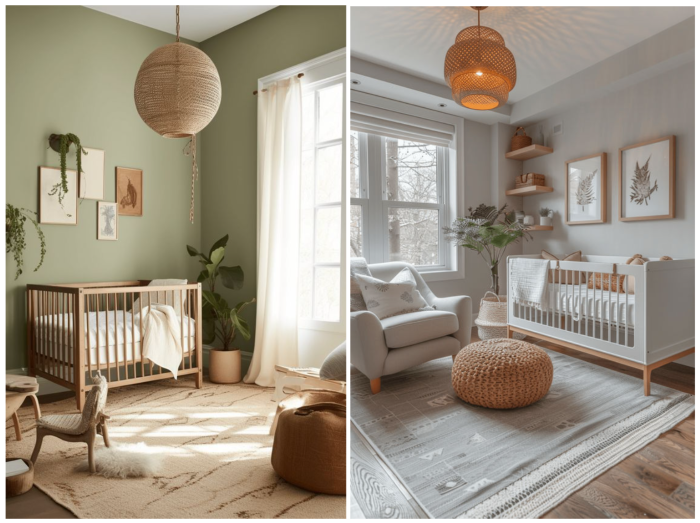
2. Exploring Popular Nursery Design Styles
Nurseries today embrace a range of design aesthetics. Here are a few popular styles:
Modern Minimalism
- Characteristics: Clean lines, neutral palettes, and clutter-free spaces.
- Highlights: Simple furniture, ample white space, and accent pieces in black, gray, or muted tones.
- Benefits: Promotes calmness and reduces sensory overload, ideal for a restful environment.
Scandinavian Simplicity
- Characteristics: A blend of functionality and warmth, featuring light woods, soft pastels, and cozy textures.
- Highlights: Natural light, eco-friendly materials, and a focus on sustainability.
- Benefits: Creates a light, airy space that fosters creativity and is gentle on the eyes.
Bohemian Chic
- Characteristics: Eclectic patterns, vibrant colors, and a mix of vintage and handcrafted elements.
- Highlights: Layered textiles, whimsical artwork, and playful décor.
- Benefits: Invites a sense of wonder and individuality, making it perfect for parents who want a creative and dynamic space.
Classic Elegance
- Characteristics: Timeless design with rich fabrics, elegant furniture, and sophisticated color schemes.
- Highlights: Detailed molding, plush rugs, and curated artwork.
- Benefits: Offers a refined atmosphere that can transition seamlessly into a child’s bedroom as they grow.
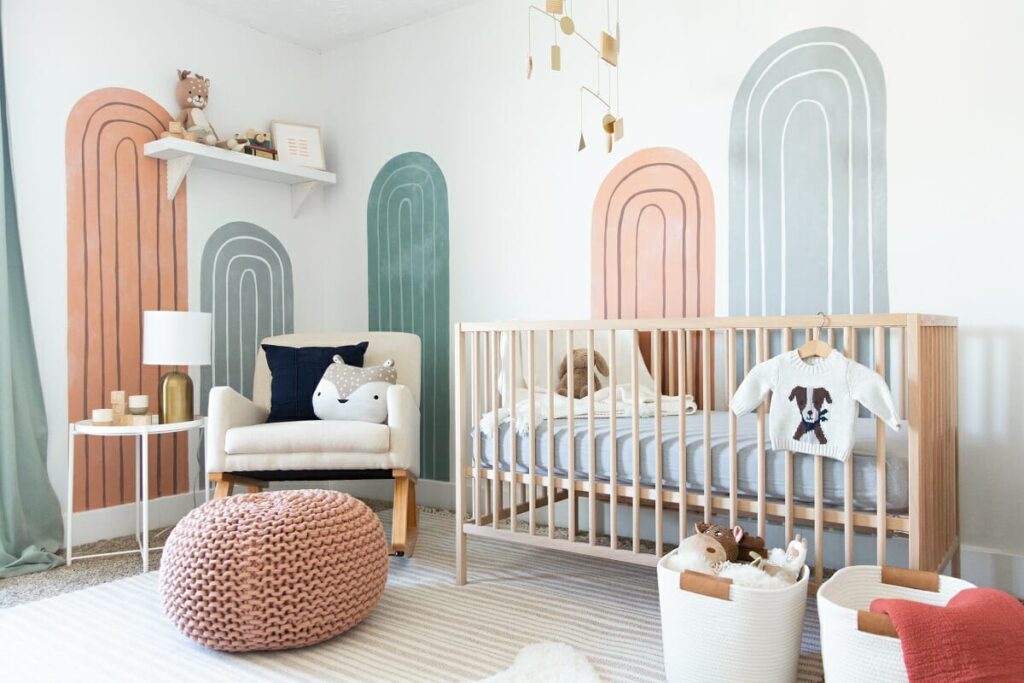
3. Key Elements of Nursery Design
To create a cohesive nursery design, focus on these foundational elements:
Color Palette
- Choosing the Right Hues: Soft, calming colors such as pastels or muted tones set the stage for relaxation, while strategic pops of color can stimulate and engage your baby.
- Adaptability: Consider paints or wallpapers that can be easily updated as your child grows, allowing the space to evolve without a complete overhaul.
Furniture and Storage
- Multi-Functional Pieces: Invest in furniture that grows with your child—cribs that convert to toddler beds, dressers that double as changing tables, and modular storage solutions.
- Safety and Accessibility: Ensure furniture is sturdy and meets all safety standards, with rounded edges and secure anchoring to prevent accidents.
Lighting
- Natural and Ambient Lighting: Maximize natural light with sheer window treatments, and complement it with adjustable ambient lighting to create a soothing atmosphere.
- Night Lights and Accent Lights: Integrate gentle night lights and accent fixtures to facilitate nighttime routines without disturbing your baby’s sleep.
Personal Touches
- Artwork and Décor: Incorporate art and décor that reflect your personal style and create a story within the room. Custom wall decals, hand-painted murals, or family photos can add a unique charm.
- Textiles and Patterns: Soft rugs, cozy blankets, and patterned curtains not only enhance comfort but also contribute to the overall aesthetic.
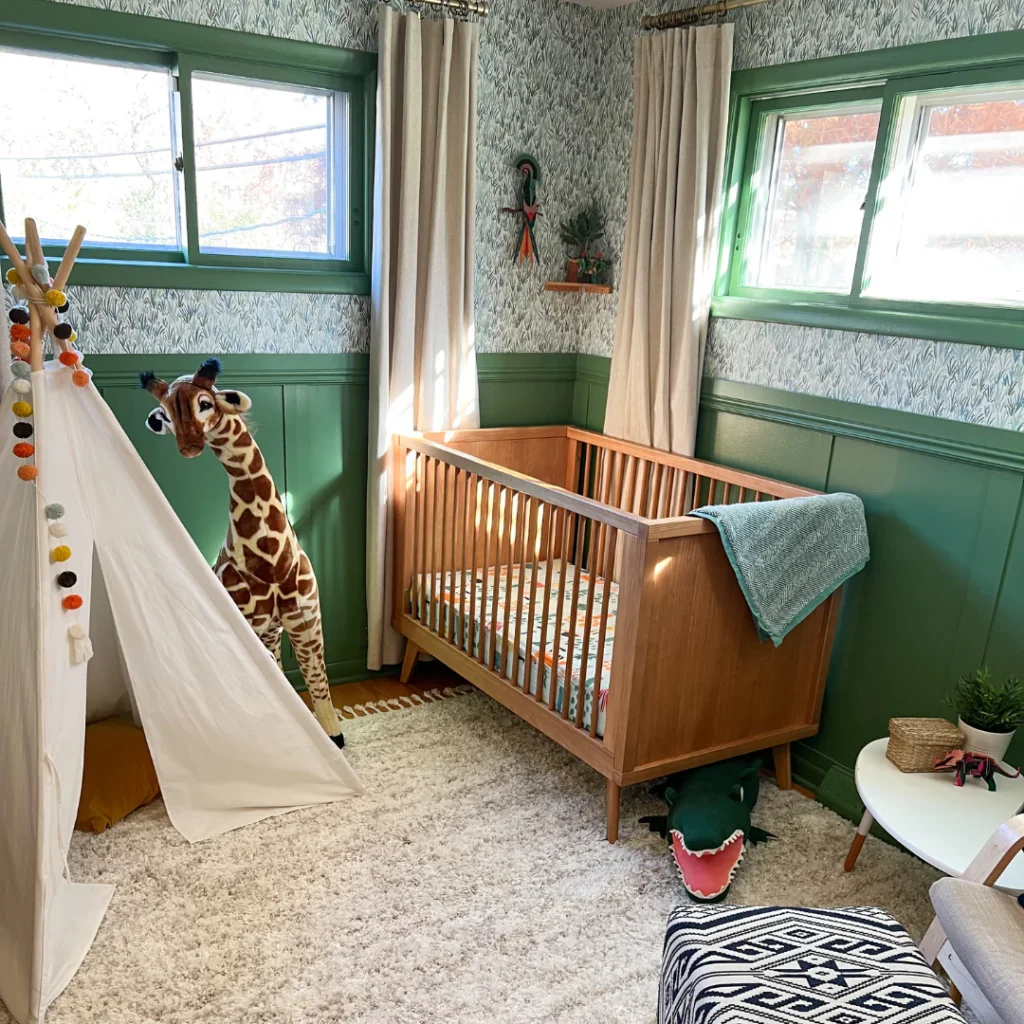
4. Practical Considerations
While aesthetics are important, the nursery must also be a functional space that grows with your child:
- Flexibility: Opt for designs that are easy to update. Removable wall art, changeable textiles, and modular furniture can adapt to changing tastes and developmental stages.
- Safety: Prioritize non-toxic materials, secure storage for baby essentials, and furniture that complies with safety guidelines.
- Budget: Design with future transitions in mind. Investing in quality pieces that can be repurposed minimizes the need for frequent redecorating, offering long-term value.
Conclusion
Designing a nursery is an exciting opportunity to merge creativity with practicality. Whether you lean towards modern minimalism, Scandinavian simplicity, bohemian chic, or classic elegance, the key lies in creating a space that is not only visually stunning but also a nurturing sanctuary for your baby. By focusing on a thoughtful color palette, versatile furniture, and personalized touches, you can craft a nursery that embodies both style and functionality, making it a cherished space for your growing family.
This comprehensive approach ensures your nursery is future-proof, adaptable, and a true reflection of your family’s style and values—a design that both you and your baby will appreciate for years to come.

